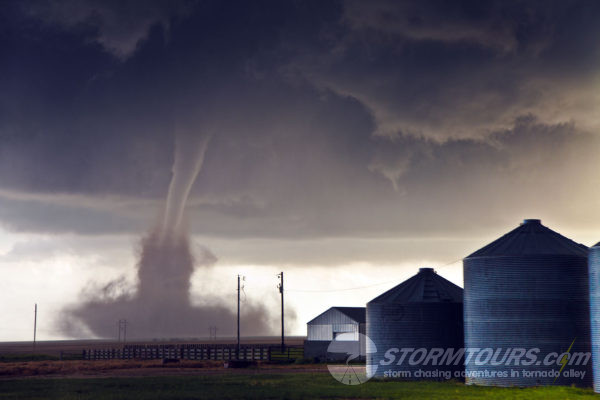9. Tornadoes never strike the same place twice.

As with lightning, this is completely false. Cordell, Kansas was hit on the same day (May 20th) three years in a row. Moore, Oklahoma has been hit numerous times, and in some areas, the same neighborhood has been hit multiple times. In Guy, Arkansas the same church was hit by multiple tornadoes on the exact same day within hours of each other.
10. Tornadoes “suck”.
You hear it often in the movies, “the suck zone,” or read it often in the news, but surprisingly tornadoes don’t really “suck”.
The idea that tornadoes suck originated when scientists first looked into the nature of the vortex. There is a pressure drop across the vortex, so the pressure is lower in the center than on the outside. It was once thought that this drop in pressure would produce a suction like a soda straw. However, it doesn’t.
Suppose that there was a complete vacuum inside the funnel and the funnel was sealed with an exception of an opening at the bottom. The highest it could possibly raise water in those conditions is 32 feet, which is the height of water that can be sustained by a pressure drop of one atmosphere. That is the maximum suction you could possibly get, so the idea of sucking things into the air (clouds) is impossible because the drop in pressure is not anywhere close to a vacuum and the vortex is not sealed (it’s composed of air).

Tornadoes are rotating columns of air. This means that the winds in and around the vortex are blowing in a circular pattern and in opposite directions. On one side the winds are blowing towards the vortex, on the other side, they’re blowing out from the vortex, all within a spinning or rotational motion, this is called radial velocity.
Warning meteorologist looks for this on radar by measuring wind speeds moving in opposite directions very close together which indicates strong ground level rotation. On radar, this is called “gate to gate shear” or a “velocity couplet.” It’s usually indicated by green and red pixels on a computer screen that is touching each other, so you can think of it as “pixel to pixel shear” as well.
There is also a vertical velocity, which is upward-lifting winds. These winds can easily loft large objects through the air, where they will eventually be blown away from the vortex and due to gravity fall back to the surface. In rare cases, the vertical winds have carried small objects extremely high into the atmosphere, where they remained suspended for some time due to the inner working winds within the thunderstorm before the eventually fell back to earth. But, while it may seem like they are “sucked up” into the storm, they are actually “pushed up” by vertical winds.
And figuratively, we can honestly say that tornadoes don’t suck. They’re actually amazing to witness and while they can be destructive, there is incredible beauty in some. We, of course, prefer our tornadoes in the open country and visible. Most of Tornado Alley is rural farmland where tornadoes can do little damage to structures. We invite you to learn more about tornadoes and join us for a storm chasing tour, to get started, pick a tour from our tour schedule and make a reservation.
View the Tour Schedule
